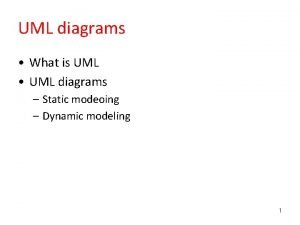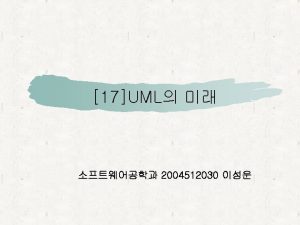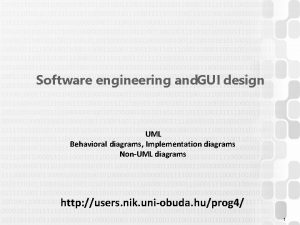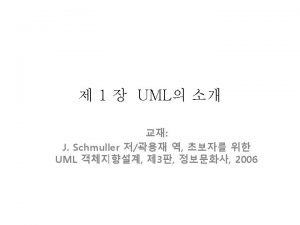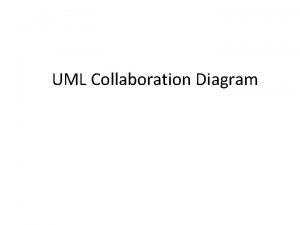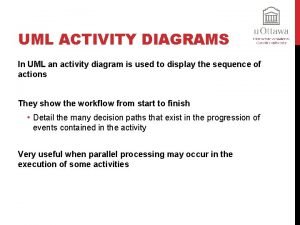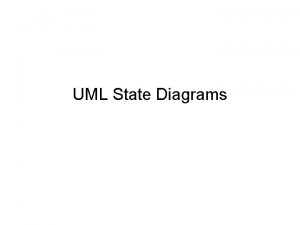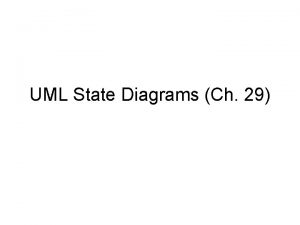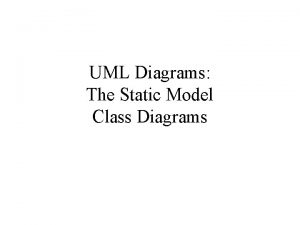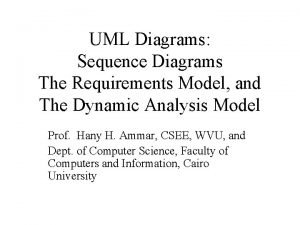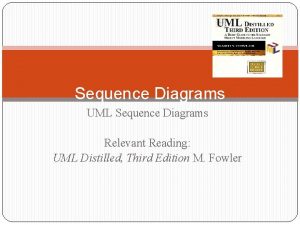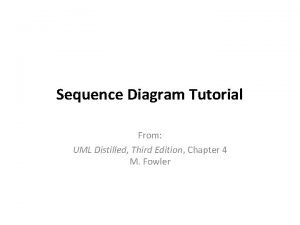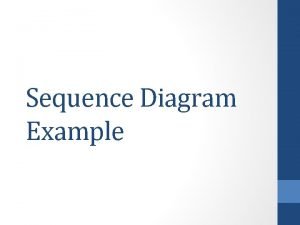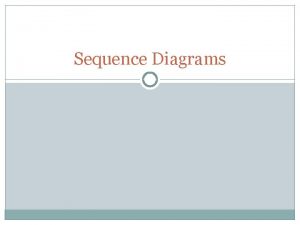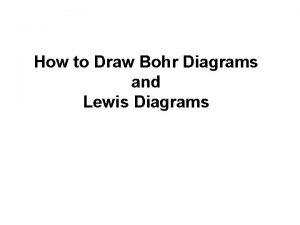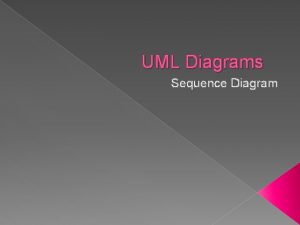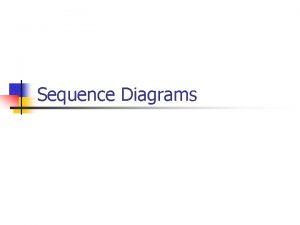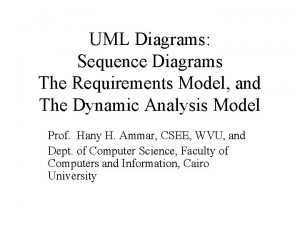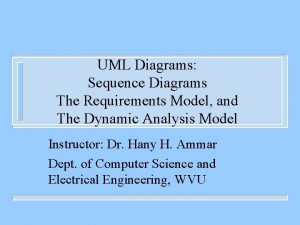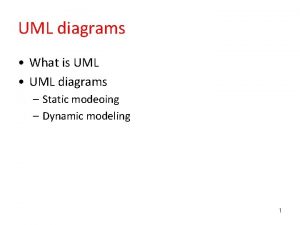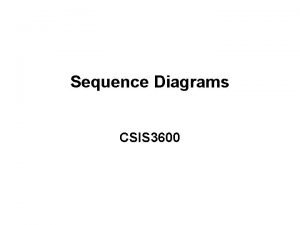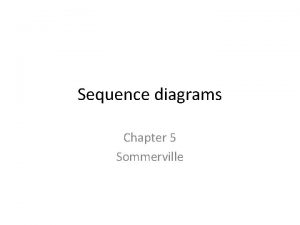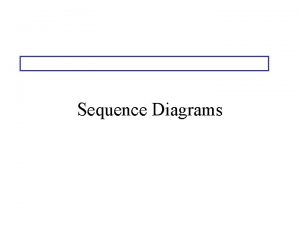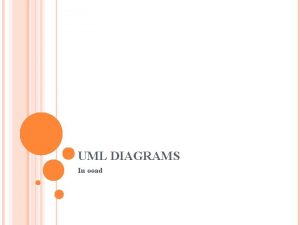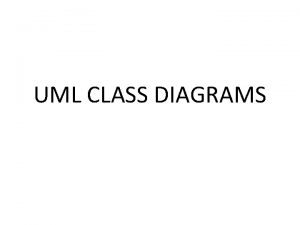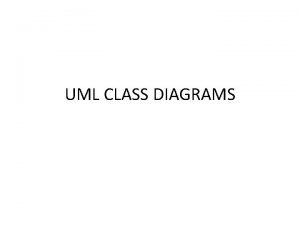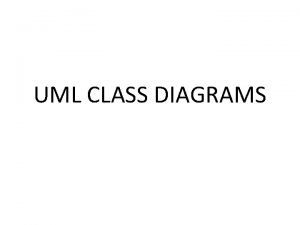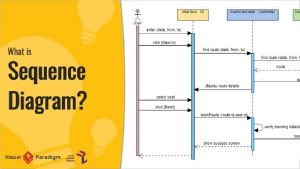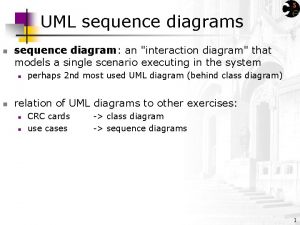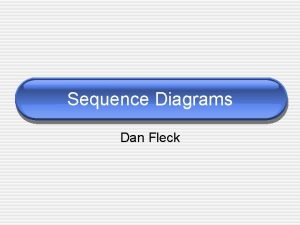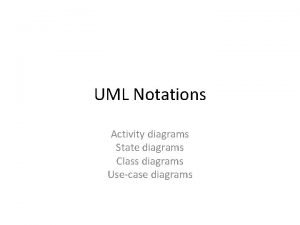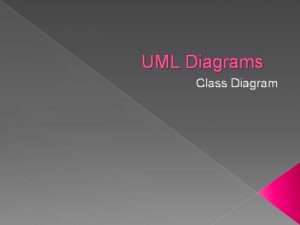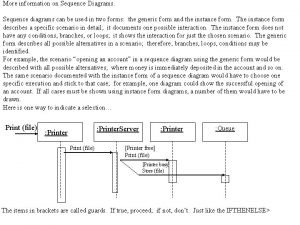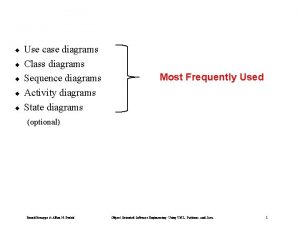UML Diagrams Sequence Diagrams The Requirements Model and






































- Slides: 38

UML Diagrams: Sequence Diagrams The Requirements Model, and The Dynamic Analysis Model Prof. Hany H. Ammar, CSEE, WVU, and Dept. of Computer Science, Faculty of Computers and Information, Cairo University

Outline • • • The Requirements Model and the Analysis model Introduction to Requirements Engineering Importance of Sequence Diagrams Rules of sequence diagrams Use Cases and Sequence Diagrams The System Sequence Diagrams The Sound Recorder Example The E-Commerce Example Other Examples

The Requirements Model and the Analysis Model The Requirements Elicitation Process Functional/ Nonfunctional Requirements Use Case Diagrams/ Sequence Diagrams (the system level) The Object-Oriented Static Analysis - Class Diagrams Analysis Dynamic Analysis - State Diagrams/ Process Refined Sequence Diagrams (The object level)

What is Requirements Engineering ? • Requirements Engineering

What is Requirements Engineering? • Requirements Management: Requirements management activities include evaluating the impact of proposed changes, tracing individual requirements to downstream work products, and tracking requirements status during development • Several Requirements management tools are available in industry

What is Requirements Engineering? • Major Requirements Management Tools: 1. Caliber-RM by Technology Builders, Inc. ; www. tbi. com 2. Requisite. Pro by Rational Software Corporation; www. rational. com 3. RTM Workshop by Integrated Chipware, Inc. ; www. chipware. com

What is Requirements Engineering? • Requirements Elicitation – is the process of gathering the different types of requirements from suitable stakeholders. • Business requirements describe why the product is being built and identify the benefits for both the customers and the business. • User requirements, describe the tasks or business processes a user will be able to perform with the product. (Developing use -cases) • Functional requirements describe the specific system behaviors that must be implemented (Developing usage scenarios) • Non-functional requirements, describe the non-functional features such as quality attributes of Reliability, Performance, availability, and maintainability.

What is Requirements Engineering? • Requirements analysis: Requirements analysis includes decomposing high-level requirements into detailed functional requirements, constructing graphical requirements models or logical models (structured Analysis models, or Object-Oriented Analysis models) (for developers), and building prototypes. • Analysis models and prototypes provide alternative views of the requirements, which often reveal errors and conflicts that are hard to spot in a textual SRS.

What is Requirements Engineering? Requirements Specification • Specification key practice is to write down the requirements in some accepted, structured format as you gather and analyze them. • The objective of requirements development is to communicate a shared understanding of the new product among all project stakeholders. • Historically, this understanding is captured in the form of a textual SRS document written in natural language, augmented by appropriate analysis models. (to be discussed in detail)

What is Requirements Engineering? • Requirements Verification involves evaluating the correctness and completeness of the requirements, to ensure that a system built to those requirements will satisfy the users’ needs and expectations. The goal of verification is to ensure that the requirements provide an adequate basis to proceed with design • Prototyping (or executable specifications) is a major technique used in verification. Examples include GUI development for user requirements verification, and Formal requirements specification environments

Importance of Sequence Diagrams • Depict object interactions in a given scenario identified for a given Use Case • Specify the messages passed between objects using horizontal arrows including messages to/from external actors • Time increases from Top to bottom

Rules of Sequence Diagrams • Sequence Initiation

Rules of Sequence Diagrams • Identify objects needed to support use case, determine sequence of internal events following the external initiating event • Diagrams that are not initiated with an external actor represent only a partial sequence • Partial sequence diagrams should clearly identify the actor initiated sequence diagrams from which they are launched

Rules of Sequence Diagrams • Messages specified on interactions can be synchronous or asynchronous Synchronous call

Rules of Sequence Diagrams Asynchronous call

Rules of Sequence Diagrams • Display operation names on call arrows

Rules of Sequence Diagrams Compound and Simple Iteration

‘included’ sequence diagrams

Showing alternate behavior in a sequence diagram

Showing Extension Point

Specifying Timing Requirements

Requirements Elicitation Process Step 4. Refining Use Cases using System Sequence Diagrams • System sequence diagrams establish the dynamic behavior in terms of key scenarios of the system for each use case • The system sequence diagram models a scenario of the system interactions with the environment for a given use case • Input/output events are clearly identified in each sequence diagram, • The State of the system before and after each event are also depicted • Different diagrams model scenarios with the normal flow of events and the abnormal flow of events

Sequence Diagrams and Use Cases System Sequence Diagram The use case diagram Of system S The sequence diagram of use case UC 1 for system S

UML Use Case Diagrams: The Requirements Model Case Study

UML Use Case Diagrams: The Requirements Model Digital Sound Recorder Case Study • A sequence diagram displays object interactions arranged in a time sequence capturing a specific scenario of interactions in a use case supported by the system Time



Example: Use Case Diagram of E-Commerce Example




Place Requistion



Other Examples of Sequence Diagrams

A Simple Example of Using UML 2 • EXAMPLE: SATELLITE CONTROL SYSTEM

Example of Software Architecture Using UML 2 • SATELLITE CONTROL SYSTEM Architecture

A Simple Example Using UML 2 • SATELLITE CONTROL SYSTEM Architectural behavior
 Difference between static and dynamic diagrams in uml
Difference between static and dynamic diagrams in uml Context diagram of hospital management system
Context diagram of hospital management system Uml class diagram
Uml class diagram Uml 1 vs uml 2
Uml 1 vs uml 2 Static uml diagrams
Static uml diagrams Uml
Uml Uml org
Uml org Collaboration diagram examples
Collaboration diagram examples Activity diagram expansion region
Activity diagram expansion region Class diagram of gym management system
Class diagram of gym management system Pos uml diagrams
Pos uml diagrams State diagrams uml
State diagrams uml Pos uml diagrams
Pos uml diagrams Uml building blocks in software engineering
Uml building blocks in software engineering Static class uml
Static class uml Things are explanatory parts of uml model
Things are explanatory parts of uml model Requirements engineering uml
Requirements engineering uml The interaction diagrams, use case diagrams are called as
The interaction diagrams, use case diagrams are called as Activity diagram if
Activity diagram if Uml sequence diagram if else
Uml sequence diagram if else Uml
Uml Sequence diagram interface
Sequence diagram interface How to read sequence diagram
How to read sequence diagram Uml sequence diagram tutorial
Uml sequence diagram tutorial Sequence diagram for restaurant management system
Sequence diagram for restaurant management system Differentiate finite sequence and infinite sequence.
Differentiate finite sequence and infinite sequence. Sequence diagram
Sequence diagram Nucleotide to amino acid
Nucleotide to amino acid Repetition pseudocode example
Repetition pseudocode example Convolutional sequence to sequence learning
Convolutional sequence to sequence learning Bohr model al
Bohr model al Hát kết hợp bộ gõ cơ thể
Hát kết hợp bộ gõ cơ thể Bổ thể
Bổ thể Tỉ lệ cơ thể trẻ em
Tỉ lệ cơ thể trẻ em Gấu đi như thế nào
Gấu đi như thế nào Thang điểm glasgow
Thang điểm glasgow Hát lên người ơi alleluia
Hát lên người ơi alleluia Môn thể thao bắt đầu bằng từ đua
Môn thể thao bắt đầu bằng từ đua


